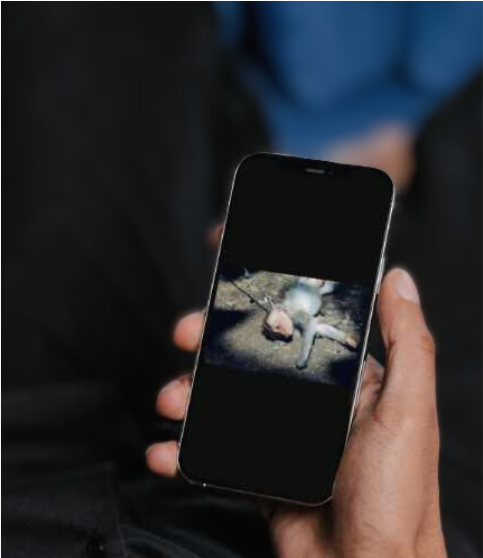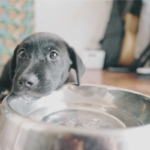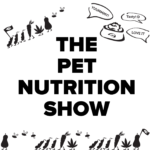
Estimated reading time: 1 minute
A common google search lately is ‘are animal rescue videos staged’? There are so many examples of online animal abuse masked as a heroic rescue these days, it’s hard to distinguish the real from the fraudulent, and they’re causing significant harm to countless animals in the process.
We explore the disturbing trend and share how to spot a fake, and we learn why people make fake animal rescue videos.
So, are animal rescue videos staged?
The short answer is, yes. Well, many are.
Fake animal rescue videos have been popular on social media for a few years now.
Despite countless animals suffering, social media companies are seemingly powerless to stop them.
Creators of fake rescue videos exploit the compassion of animal lovers and divert crucial resources away from legitimate rescue operations.
Creators of fake animal rescue videos often follow a disturbing pattern.
They deliberately place animals in dangerous situations, only to ‘rescue’ them on camera.
This not only causes immediate physical and psychological harm to the animals but also perpetuates a cycle of abuse.
The animals are often reused in multiple videos, leading to continuous suffering.
These videos are typically characterised by dramatic scenarios, such as animals being trapped or attacked.
The creators stage these situations, filming the entire process to appear as heroes.
Unfortunately, the reality is far from heroic.
These animals are subjected to extreme stress and, in many cases, do not survive the ordeal.
The videos are nothing but blatant online animal abuse and, sometimes, torture.
Creators of fake rescue videos exploit the compassion of animal lovers and divert crucial resources away from legitimate rescue operations.
Worst of all, they subject animals to unnecessary distress for the sake of views and clicks.

TO SAVE A STARFISH by Jennifer Blough: This workbook is a great resource for animal welfare advocates with compassion fatigue or burnout. Author Jennifer Blough is a mental health therapist and former animal welfare professional.
How and why people make fake animal rescue videos
Fake animal rescue videos often include the same animals being used over and over again, most likely until they die.
It’s often the same theme; a kitten being eaten by a python, a puppy stuck in a flooded drain, or a deer stuck in a pit.
They involve animals being trapped, attacked, or in distress before being ‘rescued’ (and filmed, of course).
The truth is these ‘rescuers’ are the ones who stage the situations in order to make themselves seem like a hero.
Animals are often taken from the streets and put in positions where they must fight to protect their babies or other animals.
These videos, often made in developing countries, are designed to be heart-warming, but the truth is they are heartbreaking.
Ultimately, the subject animal will likely die during filming of the fake animal rescue.
In order to get around that, the creators will edit the videos to end them with earlier footage of the animal before they died.
Well-meaning people engage with these videos, which allows the creators to earn a profit, often equating to big money.
Products to keep your pets safe
While it’s unlikely that your beloved pet will fall victim to a fake rescue video, there are other common dangers that they could encounter. From getting lost to being injured, it’s essential to be prepared and protect your best friend with the right products.
Here are some of our favourite and highly recommended items to ensure your pet’s safety and well-being at all times. These products not only help in preventing potential hazards but also provide peace of mind for pet owners.
- Pet surveillance camera: Monitor your pets in real-time and ensure their safety with high-quality pet cameras, allowing you to spot any unusual behaviour or potential dangers. Amazon has plenty of choices, from the more affordable like this one to the more expensive devices, such as this robot camera by Enabot EBO.

- Pet GPS tracking devices: These devices ensure your pet’s safety by allowing you to monitor their location, reducing the chances of losing them in unfamiliar places. Again, there’s plenty of options to choose from, suiting all budgets, when looking for the right GPS for your pet. The Tractive GPS pet tracker is one of our favourites, along with their device specifically designed for tracking lost cats.

How to spot the online animal abuse
Fake animal rescue videos are actually very easy to spot, once you know what to look for.
The trends are often the same; the scene, location, even the animal, appear in multiple videos.
To spot fake animal rescue videos, look for repetitive themes and settings.
Often, the same animals and locations even appear in multiple videos on the same channel.
The fake clips are almost always accompanied by extremely cheesy music, along with subtitles with poor grammar.
Additionally, the behaviour of the ‘rescuer’ towards the animal can be a giveaway; in fake animal rescues, they are often mishandled.
Another telltale sign of a fake animal rescue video is the way the creator responds to criticism.
If they respond rudely, or turn the comments off all together, then it’s almost certainly a fake.
These channels often have millions of views per video and have hundreds of thousands of subscribers on You Tube.

Questions to ask yourself if deciding whether a rescue video is legitimate or fake
If the video involves someone randomly happening upon an animal in need of rescue, it is likely fake.
Does the video involve a reputable organisation, such as a legitimate animal welfare agency or emergency service?
Does it seem unusual that someone is filming this? Would the rescue be made easier or quicker if the person filming was actually assisting with the rescue?
When looking at multiple videos, does it look like the same animal and location?
Is there any other description or context given? Legitimate organisations will always provide a description of the video and how they help in the rescue.
How does the ‘rescuer’ interact with the animal? In a fake animal rescue video, the ‘rescuer’ often mishandles the animal once rescued.

Genuine animal organisations campaign to end the online cruelty
Many animal rescue organisations are campaigning to end fake online animal rescue videos.
The organisations are also campaigning for greater awareness of the staged animal rescues.
They’ve urged social media companies, such as YouTube, Facebook, and Instagram, to take stronger measures to identify and remove the clips.
FOUR PAWS in Australia has been campaigning for an end to these staged videos.
World Animal Protection Australia also conducted their own investigation into this disturbing trend.
The organisation is urging social media platforms, such as You Tube, to do more to stop animals suffering for profit.
FAQ’s
Yes, many animal rescue videos on social media are staged. These videos are created for profit, exploiting animals and misleading viewers.
Look for repetitive scenarios, the same animals appearing in multiple videos, overly dramatic music, and poor grammar in subtitles. Also, observe how the ‘rescuer’ interacts with the animal; mishandling is often seen in staged videos.
Report the video to the social media platform where you found it. Also, consider informing animal welfare organisations that are campaigning against such content.
The primary motive is to earn money through views and clicks. These videos often garner a lot of attention and can be monetised, especially on platforms like YouTube.
These videos often involve putting animals in stressful and harmful situations, leading to physical and psychological trauma. In some cases, it can even lead to the death of the animals involved.
Yes, sharing these videos can inadvertently support and promote the creators, encouraging them to continue producing such harmful content. It’s important to verify the authenticity of rescue videos before sharing them.








Unfortunately people don’t use their brains. Dogmeat market rescue is so sickening and great for click bait. FB and YT don’t do a thing about it. If you report it, they are just as blind as the people who thank these so called rescuers.
How to report fake animal rescue sites,makes me so angry but their is not a category and many are from the same account
so, where do we report the scams and fake scenes?
Hi Larry, if you see a fake rescue on social media you can report it immediately; they all have options on the videos/content to report it. Animal Friendly Life team
Facebook and You tube do not care you can report to SMACCoalition.com. ladyfreethinker.org.
Thanks for that feedback, that’s really helpful to know where they can be reported to. Thanks for sharing!
I have been an animal lover since I was a child and it breaks my heart when I see what people do to animals for entertainment money that is also the reason why I am a dedicated vegan
HI Inge, it is absolutely heartbreaking. We are trying to raise awareness so people can spot them and not engage and hopefully social media companies will do something serious about them real soon. Animal Friendly Life team
Faked animal rescue videos are a black stain on society.
Things I’ve noticed:
Same emotion laddened music
The long camera time of the suffering animal before ‘rescued’
Thinking “put down the camera and do something”
The in need animal appears ugly dirty ‘groomed’ evenly, nicely.
You question how rough the rescuer is in holding and petting.
Unrealistic healing and recovery from heinous situations.
Country of origin. Poor grammar. Despondent condition of the peoples.
The rescuers are not seen except for hands.
No legit rescue organization. Can so many people really ‘find’ help and keep so many animals?
People seen in scenes are neatly and cleaning dressed despite surroundings.
Just a few I’ve noticed.
Sudden discovery of animal
Hi there, sorry we only just saw your reply as it went to our spam folder for some reason! yes agree, they are all very good signs that something isn’t right. Thanks for sharing, hopefully we can educate others to know when to spot a scam and not share or like it. Animal Friendly Life team.
I clued in to the fact this going on just this week on my own.
The bottom line is that true compassion demands immediacy. A true hero doesn’t whip out their smart phone when they see a baby monkey laying in the rain. These are not different than snuff videos in my opinion and should fall under the same policy umbrellas. Facebook is honestly degraded crap in many regards and this is one of them.
Exactly! Once you think about it and realise that any kind hearted person’s natural instinct isn’t to record on their phone, then it’s really easy to spot the fakes!
Thank you so much for informing me on this. People (like me) get so drawn in emotionally and are so heartwarmed to see the animal “recover” that we would NEVER consider the story being different! I am now convinced that basically all of these “animal rescue” videos are staged. Once you are aware and look for it, you see the same ‘fishy’ signs and how unrealistic they are in many ways. Horrible, unimaginable cruelty. May Jesus come soon. God bless you.
Hi Emily, that’s so true- we would never naturally think anything bad or that people would be so cruel. So it’s understandable how so many people get drawn into the videos naively.
Thanks for your feedback!
AFL team
I alternately report or “hide” these posts (theoretically it tells the social media platform that I don’t want to see them) but it seems to have no effect. I’d comment on the videos to tell the ignorant people who seem to believe them, but of course interacting with the post would be counter-productive, so I don’t. These videos and shameful acts are out of control, every single day I see many – and yet I don’t think I have ever seen a post that educates people about it. Would it be possible for organisations such as yours to create shareable posts? I for one would share it far and wide.
That’s a good point, showing that you’re not even going to watch it sends a strong message.